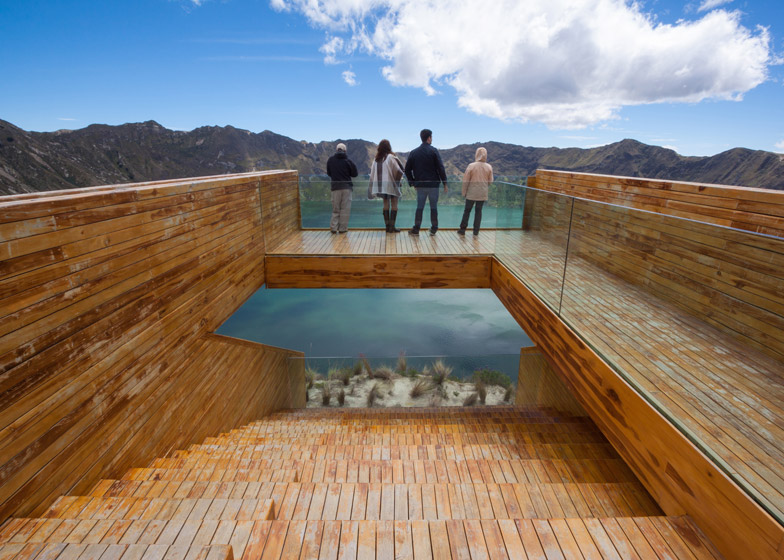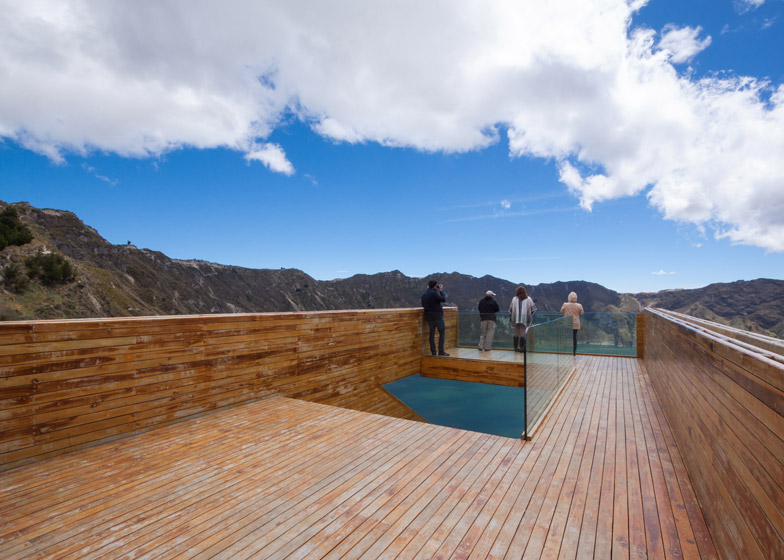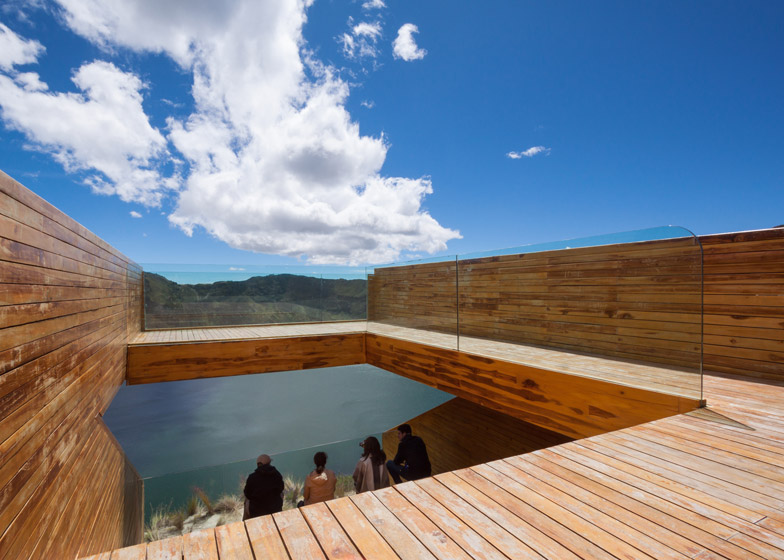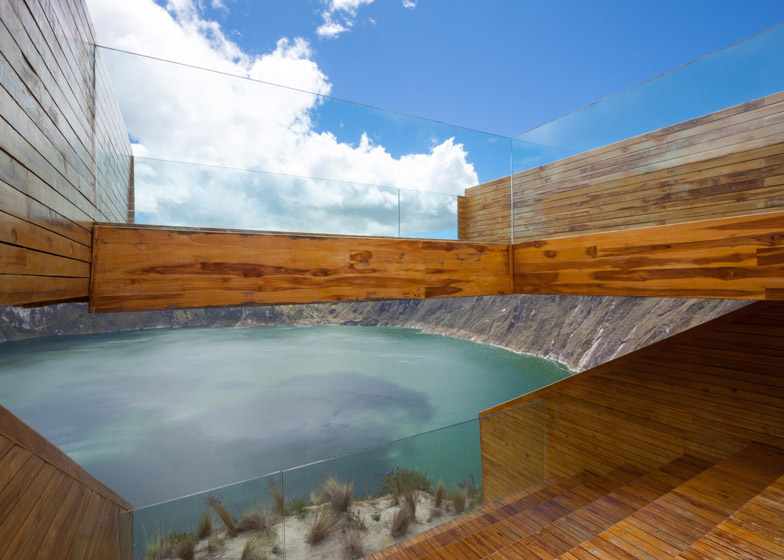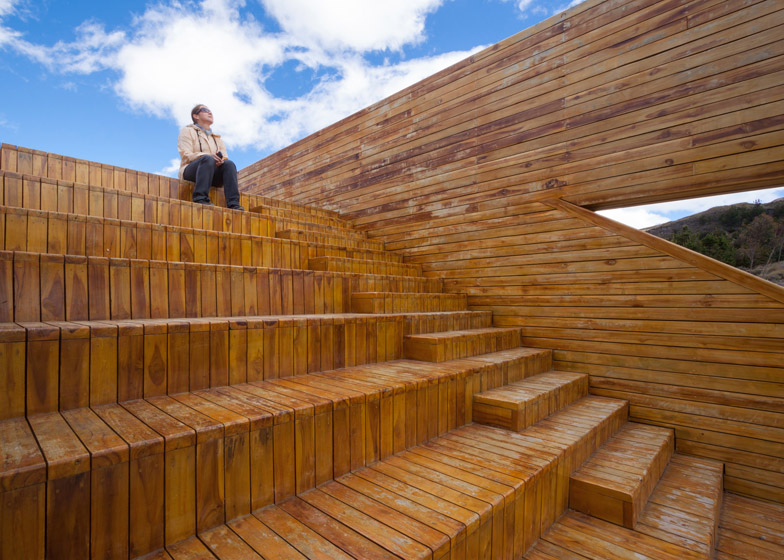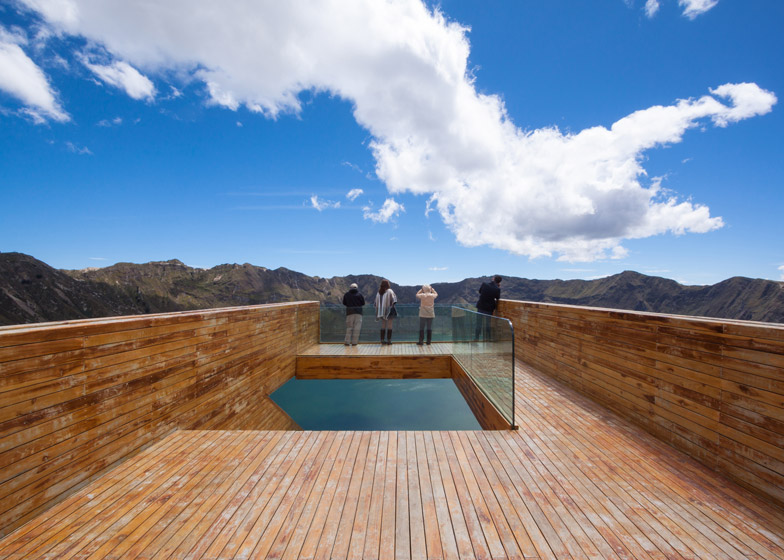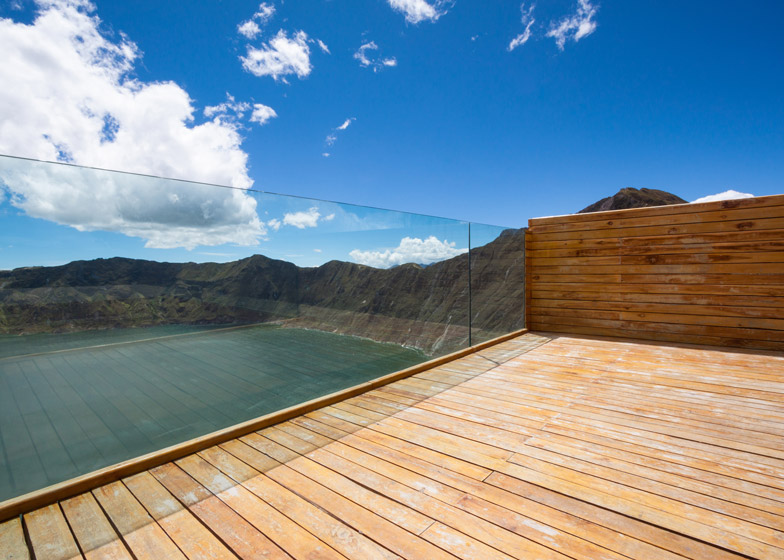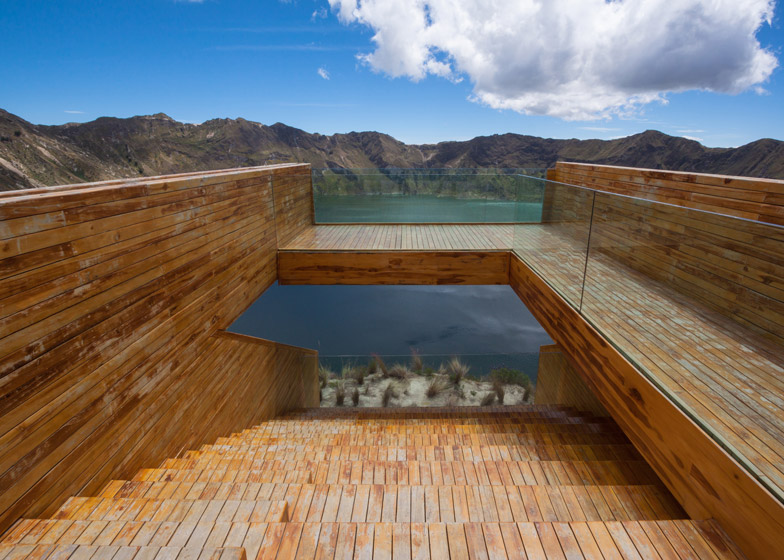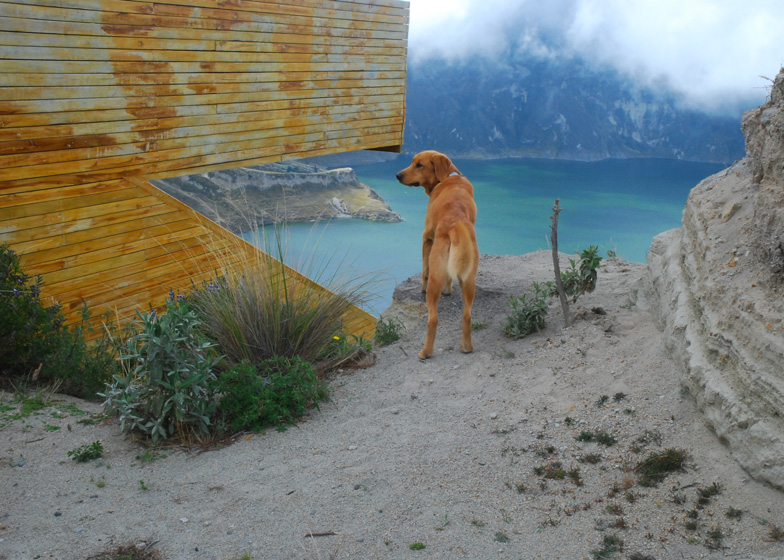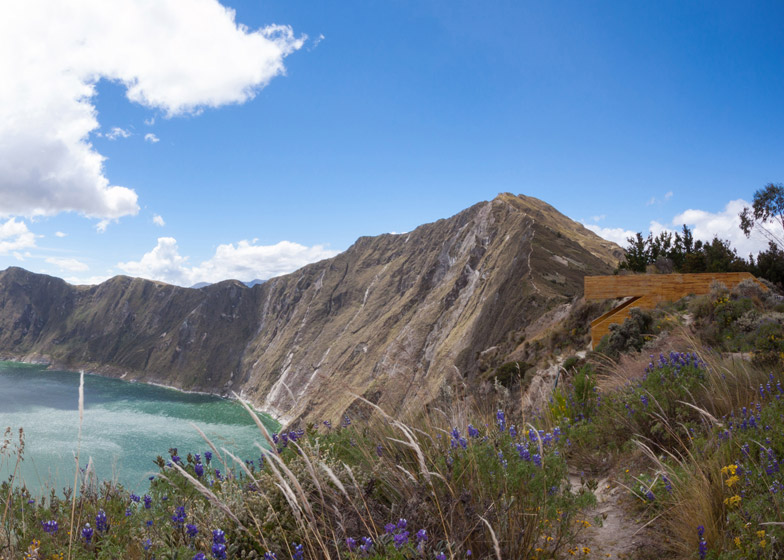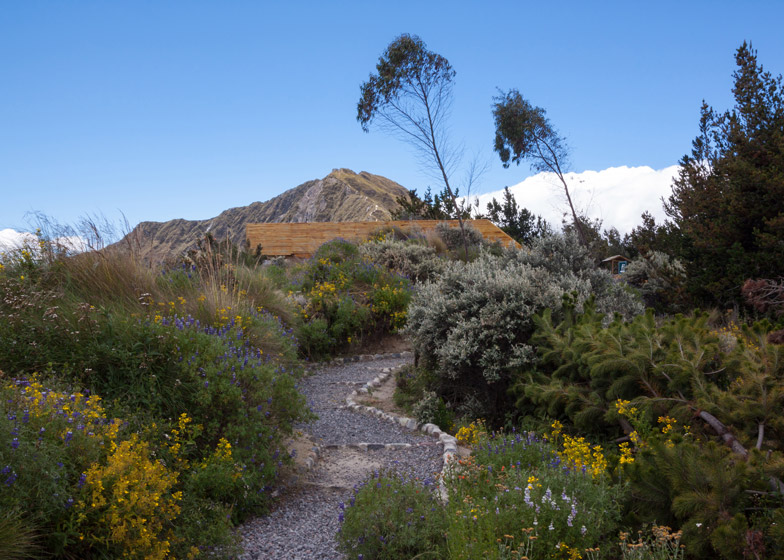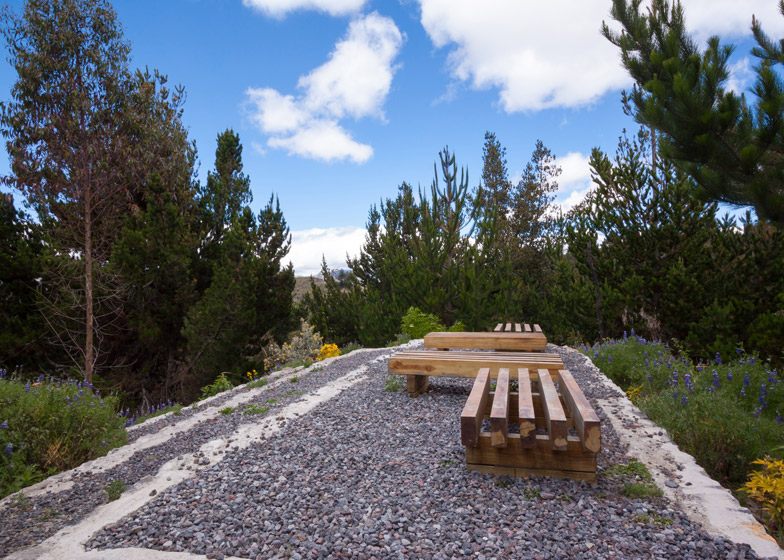This wooden observation platform by architects Javier Mera, Jorge Andrade and Daniel Moreno sits high above a three-kilometre-wide lake inside an active volcano in the Ecuadorian Andes (+ slideshow).
Mera, Andrade and Moreno designed the viewing deck for the edge of Quilotoa, a water-filled volcanic crater with a three-kilometre caldera that was formed after an eruption 800 years ago.
Positioned 3,974 metres above sea level, the high-altitude Quilotoa Crater Overlook offers tourists two different viewpoints down to the water, which is a vivid shade of turquoise thanks to the volcanic minerals present.
The project was instigated by the Ecuadorian tourist board, which requested an attraction that would support the guided visits, restaurants and accommodation run by the indigenous Shalalá community.
"The ministry aimed to support the venture of the community, helping its members to increase their income through their involvement in the provision of touristic services," said the architects.
Constructed amongst the low grasses and bushy shrubs, the steel-framed wooden platform comprises an upper deck that extends out into the air, and a set of descending steps that create bleacher-style seating.
"The experience of the user is enriched through the creation of a platform extending from the edge of the crater over the cliff looking to give the visitor the opportunity to 'fly' over the landscape, producing an almost vertigo-like sensation," said the architects.
"At the same time, a space for passive viewing is created, where the user is protected from the elements and is able to have a moment of contemplation and introspection."
The teak wood surfaces have a pre-weathered finish that help them to blend in with the overgrown landscape, while balustrades are glazed so as not to disrupt the views.
"The discrete but magnificent beauty of the landscape demands the architectonic response to be austere, in an attempt to merge itself with the surrounding landscape," added the team.
The structure will be maintained by the local community, and has been designed so it can be easily dismantled if necessary.
The project also included the addition of a gravel pathway that connects the platform with other nearby tourist facilities.
Photography is by Lorena Darquea, apart from where otherwise stated.

